
Leprechauns and/or Mushrooms
March 17, 2013
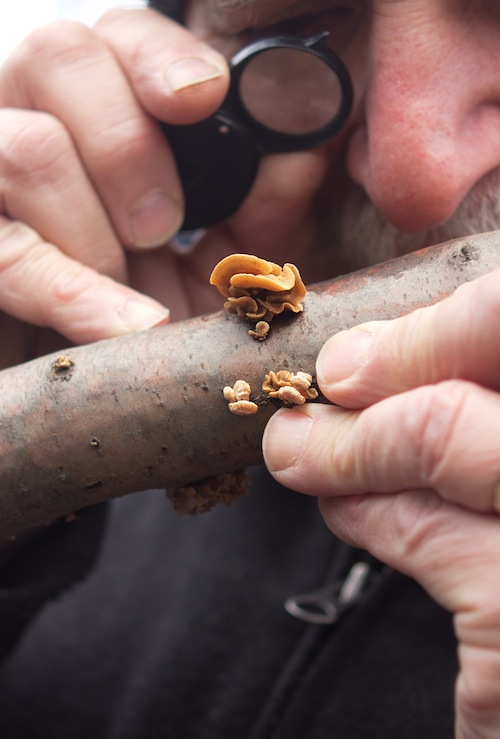
Today, Saint Patrick’s Day, I collected my first mushroom. The New York Mycological Society held one of their regular fungus walkabouts, this time in Inwood Hill Park. The site had advertised
leprechauns, but this turned out to be a ruse, perhaps to draw newcomers into their musty cult. (How to identify a newcomer: he’s the one not wearing a loupe on a lanyard.) But I couldn’t have been the only person who noticed something naturally leprechauny about our leader, the New York Botanical Garden’s
Gary Lincoff:
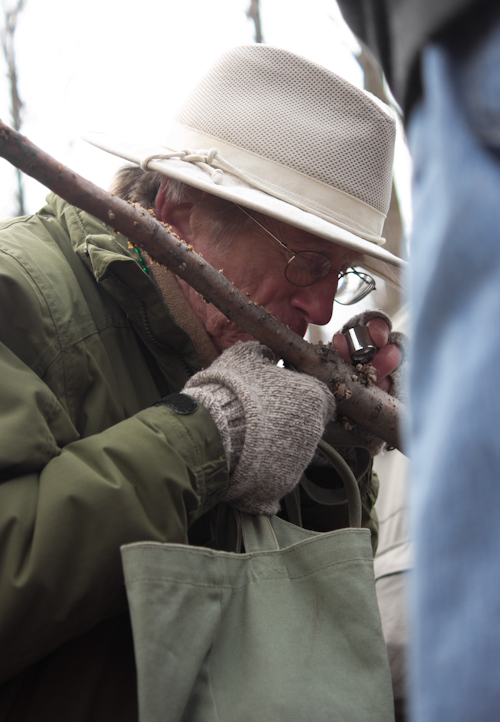
People obsessed with mushrooms seem to share a wary friendliness that first manifests as a slow burn of excitement. There are two hundred different mushrooms you can collect in Inwood, and microfungi beyond number. The prospect of spotting something strange—down in the leaves, budding from a log or rock, or oozing down a crack—never dies. One young man carries a clipboard to log his discoveries; he wears a shearling hunting cap, and has a scruffy Civil War-style mustache and blue eyes as pale as an iceberg. He says: “If you don’t find something new, you’re not looking hard enough.” This is not a bad thing to hear from a club member.
I learned fifteen thousand things. Here are a few.
Mushrooms are not plants or animals. In turn, slime molds are not mushrooms. Slime molds are in fact gargantuan amoebae. The one below had sprouted a yellow shag carpet of fruiting bodies. Why? Air currents are dead on the forest floor, but not millimeters above it. The tiny boost gives the spores a chance to spread.
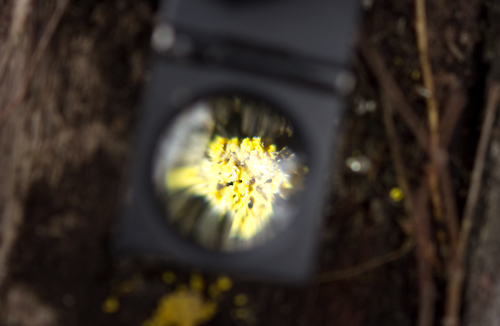
This tawny fungus naturally forms tessellating shapes. The Linnaean handle is
Xylobolus frustulatus; Latin
frustum means “piece broken off.” Its handsome nickname is “ceramic parchment.”

Every serious mushroom hunter goes out with a bottle of potassium hydroxide, or “KOH.” If you dropper this compound on a mushroom, the stain may turn black, or yellow, or even purple, often clinching the identification (common ammonia is also used). The mushroom below is a
Phellinus rimosus and it was found growing on a fallen black locust tree, which is this particular mushroom’s specialty. It’s now in my freezer to kill the bugs; later it’ll go on the windowsill, next to the
fossil.
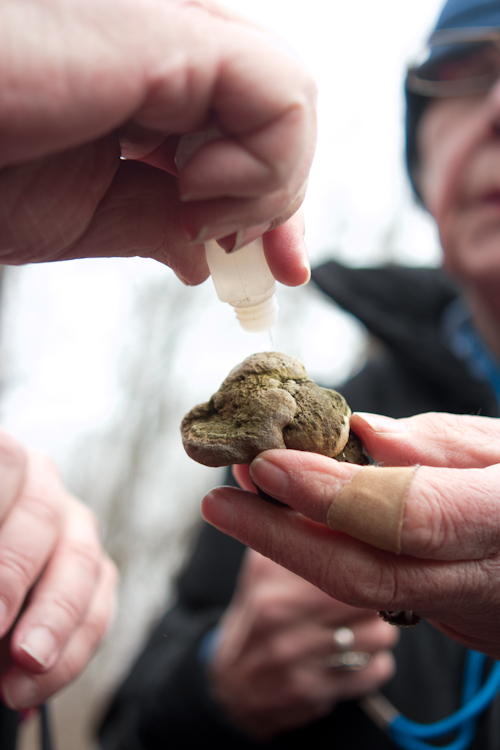
This next mushroom is called
Daldinia concentrica by biologists, “King Alfred’s cake” by civilians, “cramp ball” by folklorists, and “mockturdle” by myself. You can’t, and wouldn’t, eat it. The cake name comes from a legend about Anglo-Saxon king Alfred who, while fleeing the invading Vikings, hid incognito in a peasant woman’s cottage; when she asked him to keep watch on her cakes, he let them burn because he was so preoccupied with his threatened kingdom, and presumably a shitty cook anyway. (Turns out the story was actually
ripped off from the Vikings.) The mushrooms were a bogus remedy for cramps: sufferers used to carry them in their pockets.
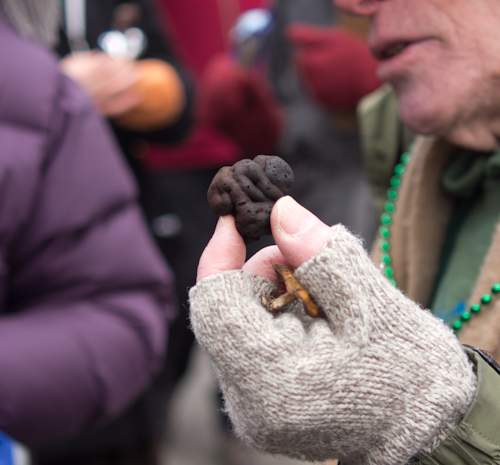
June, I’m told, is the best time to go fungus hunting. When I ask if there’s any charismatic mushroom that might knock a beginner out, one man (tweed coat, horn-rimmed glasses) says: “You should have been with us on our December walk. Then you would have found something that could have knocked you out for real.” Psilocybin, he explains. Shrooms. Magic mushrooms. Boomers. Caps. Mushies. Blue meanies. “Growing right up there,” he says, pointing up the hill. Now you know.












